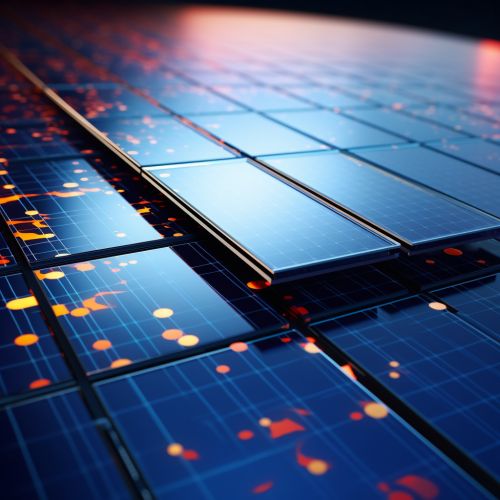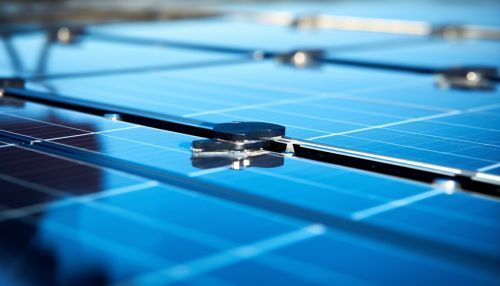Solar Energy Conversion
Introduction
Solar energy conversion refers to the process of transforming the energy from the sun into other forms of energy, such as thermal or electrical energy. This conversion is achieved through various technologies, including photovoltaic cells, concentrated solar power, and solar thermal energy systems.
Solar Energy
Solar energy is the radiant light and heat from the sun, which is harnessed using a range of technologies such as solar heating, photovoltaics, solar thermal energy, solar architecture, and artificial photosynthesis. It is an important source of renewable energy and its technologies are broadly characterized as either passive solar or active solar depending on how they capture and distribute solar energy or convert it into solar power.
Solar Energy Conversion Technologies
Photovoltaic Cells
Photovoltaic cells, also known as solar cells, convert sunlight directly into electricity. When sunlight strikes the cell, it excites the electrons in the cell, causing them to move and create an electric current. This process is known as the photovoltaic effect.


Concentrated Solar Power
Concentrated solar power systems generate solar power by using mirrors or lenses to concentrate a large area of sunlight onto a small area. The concentrated light is then used as a heat source for a conventional power plant. There are several types of concentrated solar power systems, including parabolic troughs, dish Stirling engines, and solar power towers.
Solar Thermal Energy
Solar thermal energy systems capture the heat from the sun and use it to heat water or other fluids, which can then be used for space heating, water heating, or to drive a heat engine. These systems can be categorized into low, medium, and high-temperature collectors.
Efficiency of Solar Energy Conversion
The efficiency of solar energy conversion is a key factor in the viability of solar power as a renewable energy source. The efficiency of a solar cell is determined by the percentage of sunlight that the cell can convert into usable electricity. While the theoretical maximum efficiency for a single-junction solar cell is approximately 33.7%, known as the Shockley-Queisser limit, most commercial solar cells operate at efficiencies between 15% and 20%.
Environmental Impact
Solar energy conversion technologies have a significantly lower environmental impact compared to conventional energy sources. They produce no direct greenhouse gas emissions during operation and require no fuel, reducing their contribution to climate change and air pollution. However, the production and disposal of solar panels do have environmental impacts, including the use of hazardous materials and energy-intensive manufacturing processes.
Future of Solar Energy Conversion
The future of solar energy conversion looks promising, with ongoing research and development aimed at improving the efficiency and reducing the cost of solar energy technologies. Emerging technologies, such as perovskite solar cells, promise higher efficiencies and lower costs, potentially making solar power an increasingly viable alternative to fossil fuels.
